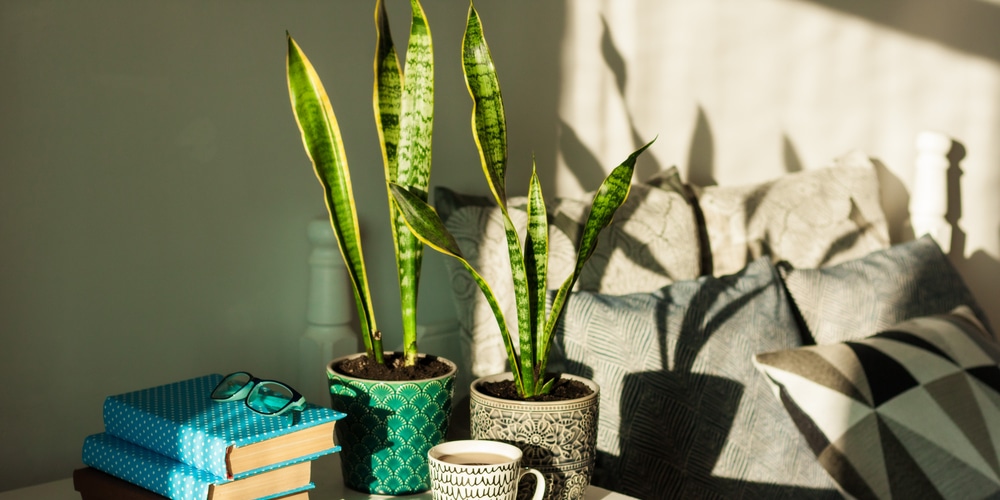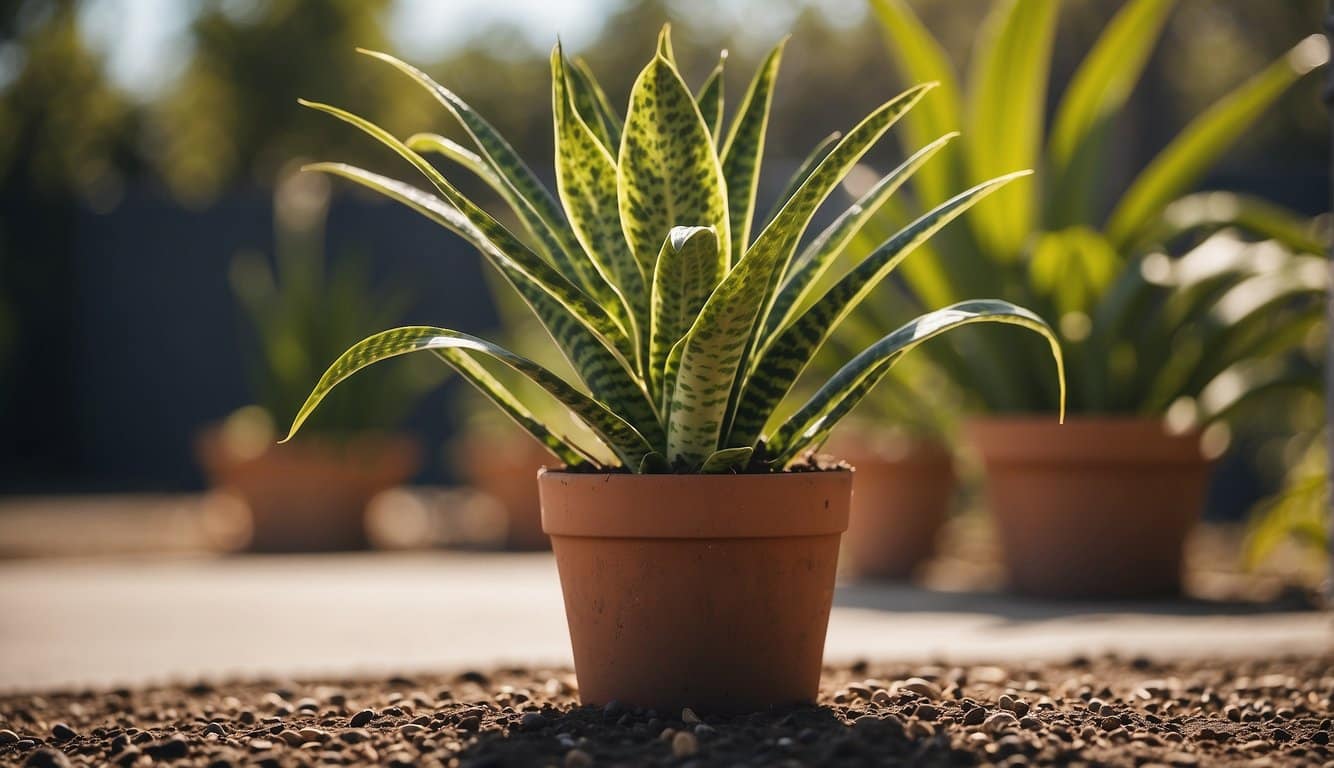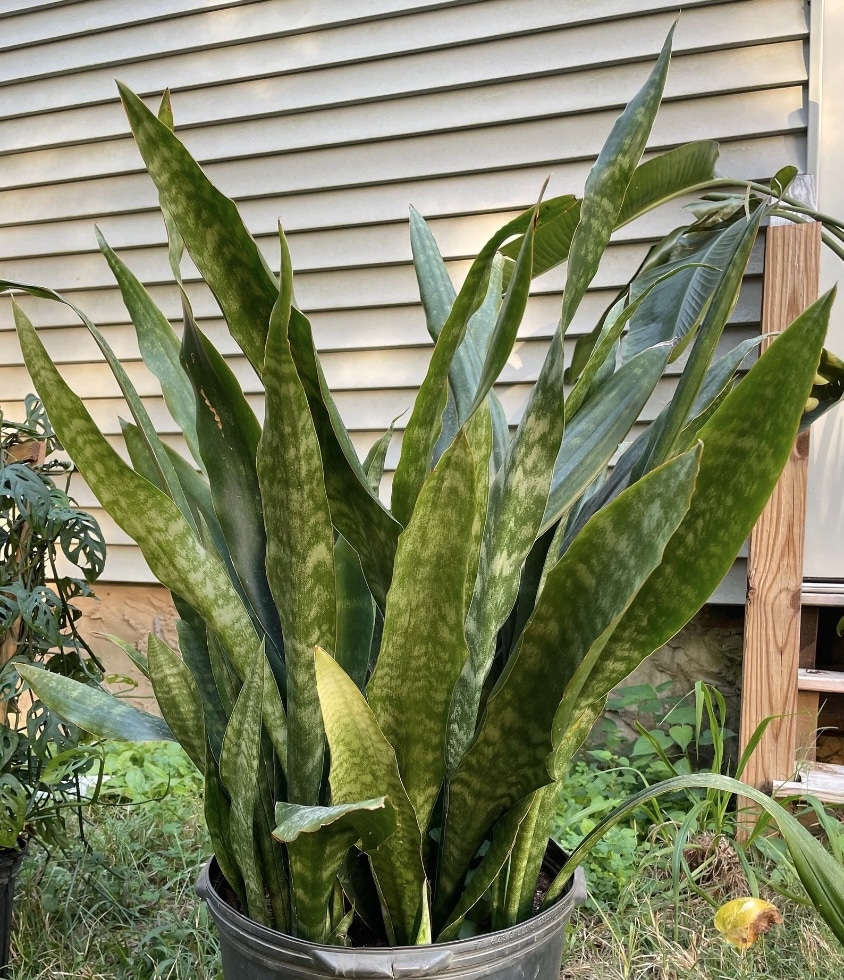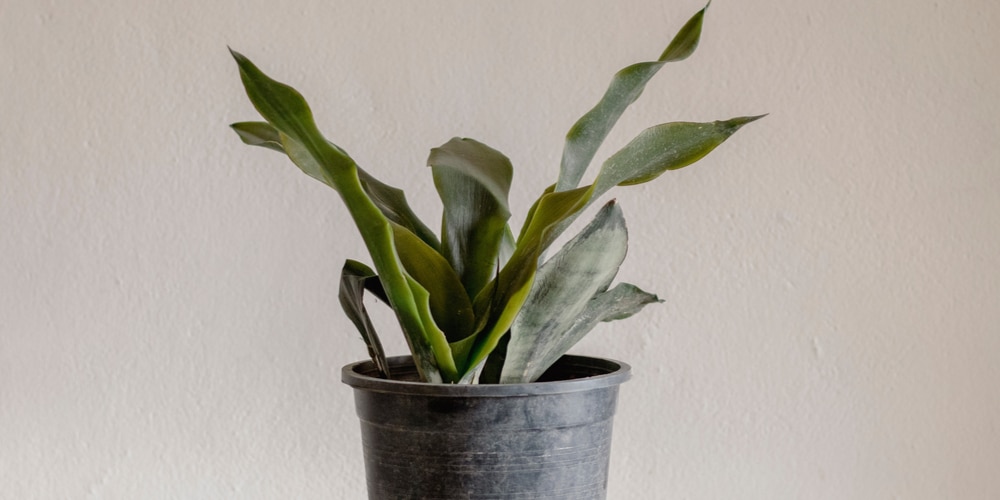Quick Info

Here’s the meat and potatoes of the article, with 0 fluff:
| Question | Can Snake Plants Live Outside? |
|---|---|
| Answer | Yes, but with conditions |
| More Info | Snake plants can be grown outdoors in the right conditions: |
- Climate: They are suitable for outdoor life in USDA hardiness zones 9 to 11, where temperatures do not typically drop below 30°F (-1°C).
- Sun Exposure: They require some sun but should be protected from direct, harsh sunlight, which can scorch their leaves.
- Soil and Watering: They need well-draining soil and should not be overwatered, as their roots are prone to rot in moist conditions.
- Winter Care: In cooler climates, snake plants should be brought indoors or provided with protection from frost, as they are not frost-tolerant.
It’s essential to consider the local climate and environmental conditions when deciding to plant snake plants outdoors. In suitable climates, they can be a low-maintenance addition to gardens, thriving with minimal care.
Snake Plants and Outdoor Environments
Snake plants, scientifically known as Sansevieria, are resilient and versatile, making them popular among both novice and experienced gardeners.
When considering transitioning these hardy plants to the outdoors, there are important environmental factors to bear in mind.
Light Exposure:
- Gradually introduce your snake plant to outdoor light conditions to prevent shock.
- They enjoy bright, indirect light for around 3 to 4 hours a day (The Right Way to Move a Snake Plant Outside).
Temperature Tolerance:
- Snake plants prefer warmer climates, thriving in temperatures between 55 to 90 degrees Fahrenheit.
- They are suitable for outdoor growth in USDA Zones 8 through 11, where the temperature is milder (Can Snake Plants Live Outside?).
- Begin by placing your plant in a shaded area.
- Slowly increase exposure to the outdoor environment.
- Ensure to bring the plant in before the temperature drops at dusk (How To Move a Snake Plant Outdoors).
Watering Needs:
- Outdoor snake plants require less frequent watering than their indoor counterparts due to natural precipitation.
- However, be mindful of overwatering which can lead to root rot.
By paying attention to these aspects, you can successfully integrate a snake plant into your outdoor space.
Remember to monitor your plant for any signs of stress, such as drooping or discolored leaves, which could indicate a need for environmental adjustments (Growing Tips for Outdoor Snake Plants).
Caring for an Outdoors Snake Plant
Successfully transitioning your snake plant to an outdoor environment hinges on several vital care elements.
Addressing the plant’s needs in terms of climate, soil, water, and sunlight is crucial for its health and growth.
Suitable Climate for Growth
Snake plants prefer temperatures that typically range from 70°F-90°F (21°C-32°C).
Cold temperatures can be detrimental, as prolonged exposure to conditions below 50°F can harm or even kill the plant.
To ensure your snake plant’s survival outside, it is best to place it outdoors during the warmer months if you live in a region that experiences cooler temperatures.
- USDA Zones: Ideally suited to zones 9-12.
Soil Requirements and Drainage
The right soil composition and drainage are critical for outdoor snake plants.
These plants thrive in well-draining soils that prevent water from pooling around their roots, which can cause rot.
- Soil Composition: Loose, sandy soil with some organic material is optimal.
- pH Level: Slight preference for slightly acidic to neutral pH levels (between 6.1 and 7.3).
Watering and Feeding Needs
Even though snake plants are drought-tolerant, establishing a consistent watering routine can promote their health when outdoors.
Feed your snake plants with a balanced, all-purpose houseplant fertilizer during their growing season for best results.
- Water: Allow the soil to dry out completely between waterings.
- Fertilizer: Apply during the growing season, typically spring through fall, every 4-6 weeks.
Sunlight and Placement Considerations
Your outdoor snake plant will need balanced exposure to sunlight, as too much direct sunlight can scorch its leaves, while too little can hinder its growth.
It’s essential to find a sweet spot, often a location that replicates the light conditions it experienced indoors.
- Bright Indirect Light: Ideal for a few hours, especially in the morning.
- Shade: Consider partial shade to protect during the intense afternoon sun.
Issues that Can Harm Your Snake Plant
When taking your snake plant outside, be aware of some common issues they may face in their new environment. With the right strategies, your plant can adapt and thrive outdoors.
Temperature Fluctuations and Protection
Your snake plant prefers stable conditions, so abrupt temperature changes can be stressful.
Classic signs your plant is struggling with temperature variations include wilting or browning.
- Solutions:
- Gradually acclimatize your plant by initially placing it outside for a few hours daily.
- Protect your plant from extreme temperatures by using insulation materials like burlap wraps during cold snaps.
Pest and Disease Management
The exposure to outdoor conditions can introduce pests and diseases to your snake plant, which typically enjoys the regulated indoors climate.
- Solutions:
- Inspect your plant regularly for signs of pests or disease, such as discolored leaves or sticky residue.
- Utilize organic pesticides or natural methods such as neem oil to handle infestations without harming the environment.
Seasonal Care and Maintenance
As an enthusiastic gardener, you can successfully grow snake plants outside with proper seasonal care.
Snake plants are resilient, but as the seasons change, your approach to their maintenance must adapt to ensure their health and vigor.
Spring:
- Begin with a gentle transition from indoors to outdoors, to prevent shock from the sudden change in environment. Gradually increase outdoor exposure.
- Fertilize your snake plant as it enters the growing season. Use a balanced, slow-release fertilizer to boost growth.
Summer:
- Position your snake plants in areas where they can enjoy filtered sunlight or partial shade, away from direct sun that may scorch their leaves.
- Watering: Increase as temperatures rise but ensure the soil drains well to avoid root rot.
Autumn:
- Prepare to move your snake plant inside if nighttime temperatures are consistently dropping below 50°F (10°C).
- Reduce watering as the plant’s growth slows down with cooler temperatures.
Winter:
- Protect your snake plants from frosty conditions. They should not be kept outdoors in winter unless you live in a warm climate or provide a small greenhouse to maintain adequate temperatures.
- Watering: Keep to a minimum, only when the soil is dry to the touch.
Acclimation and Transition Tips
When moving your snake plant outdoors, it’s crucial to acclimate the plant to prevent shock carefully.
- Light Exposure:Gradually introduce your snake plant to outdoor light conditions.
Start with a shady spot and increase the time it spends in the sun by a few hours every other day to mimic its prior indoor lighting environment.
- Temperature Tolerance:Your snake plant prefers temperatures between 50-85° Fahrenheit.
Monitor outdoor temperatures and begin transition when the conditions are favorable, avoiding any risk of frost.
- Outdoor Placement:Initially, place your snake plant on a protected deck or under partial shade that offers light similar to its indoor situation.
- Watering Practices:Adjust watering to meet the plant’s needs outdoors, which might be different from inside due to changes in temperature and humidity.
- Avoid the Midday Sun:Prevent leaf burn by not leaving your snake plant in direct sunlight during the hottest part of the day.
- Increase Duration Gradually:Augment outdoor time by a couple of hours incrementally.
Ideally, your snake plant should get comfortable over the course of a week or two.
- Check Regularly:Keep an eye on the plant for signs of stress, such as wilting or discoloration.
Your snake plant should tell you if the transition isn’t going smoothly.
Frequently Asked Questions
In this section, you’ll find specific advice on how to ensure your snake plant thrives in an outdoor environment, including temperature tolerances and care tips.
How should a snake plant be cared for when kept outdoors?
When keeping a snake plant outside, it is vital to provide well-draining soil and to position it where it will receive balanced lighting.
Water the plant sparingly to prevent root rot and adjust its care routine to the outdoor conditions, focusing on adequate shade and protection from extreme weather.
What temperature range can a snake plant withstand outside?
A snake plant can tolerate outdoor temperatures between 70°F-90°F (21°C-32°C).
Sudden temperature drops or exposure to cold drafts can damage the plant, therefore, it’s recommended to keep it within a safe temperature range and move it indoors if cooler weather is anticipated.
Can snake plants survive outdoor winter conditions?
Generally, snake plants cannot survive outdoors in winter, especially when temperatures fall below 50°F.
In colder climates, it’s best to bring them indoors or provide a protective greenhouse setup during the colder months to ensure their survival.
Is it suitable to place a snake plant outside during the summer?
Yes, during the summer months, your snake plant can flourish outside, as long as the temperature remains within the ideal range and it does not receive too much direct sunlight, which can scorch its leaves.
Ensure that the plant also has access to shade and is not left to dry out completely.
What precautions are needed for a snake plant living outside in hot climates like Arizona?
In hot climates such as Arizona, a snake plant will require:
- Protection from intense midday and afternoon sun.
- Regular watering to avoid dryness, especially during peak summer heat.
- A shaded or semi-shaded location to prevent leaf burn.
Can snake plants endure direct sunlight when situated outdoors?
Snake plants prefer indirect light or partial shade. They may suffer from leaf burn if exposed to direct sunlight for prolonged periods.
If your outdoor space is very sunny, consider using a shade cloth. You can also place the plant in a location where it will receive sunlight filtered through other plants or structures.
Last update on 2025-04-25 / Affiliate links / Images from Amazon Product Advertising API





